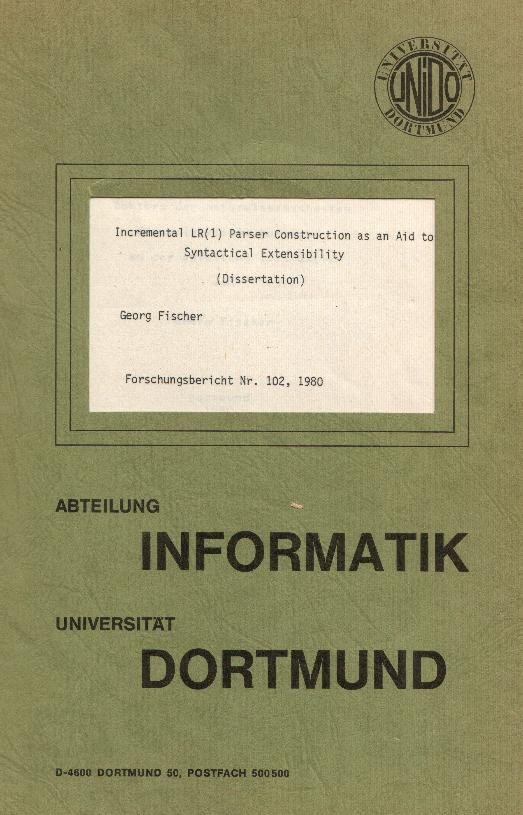
After a series of preparations, among them
Except for the members of the examination team, few people have probably read the document. Therefore I was pleased that the WWW shows a reference which states that it was one of the first attempts to incremental LR(1) parser generation.
To achieve this, I developed a simple form of text control language. With a PL/1 programm called ARBEIT I could transform this representation in appropriate print lines with form feed control characters.
The original PL/1 program ARBEIT went lost in a heap of several thousand other programs. Therefore in June 2002 I wrote a perl program arbeit.pl,
which simulates the former behaviour. It transforms the form feed codes for overprinting in mathematical symbols, bold print and underlining, but this time t produces HTML. In addition, the program now inserts several hyperlinks (the WWW did not yet exist at that time) into the table of contents. Please use a modern browser like Mozilla in order to properly display mathematical symbols like for example the all quantor ∀ (∀).
With an appropriate makefile kann ich nun I can now reproduce the original work almost identical with the printed version:
Abteilung Informatik, Universität Dortmund
Forschungsbericht Nr. 102, 1980
Last modification: 2-Oct-2002
Please direct any questions or comments to:
<punctum@punctum.com>, Dr. Georg Fischer.